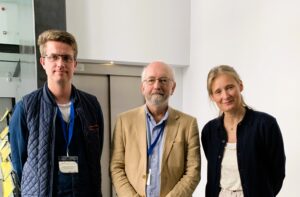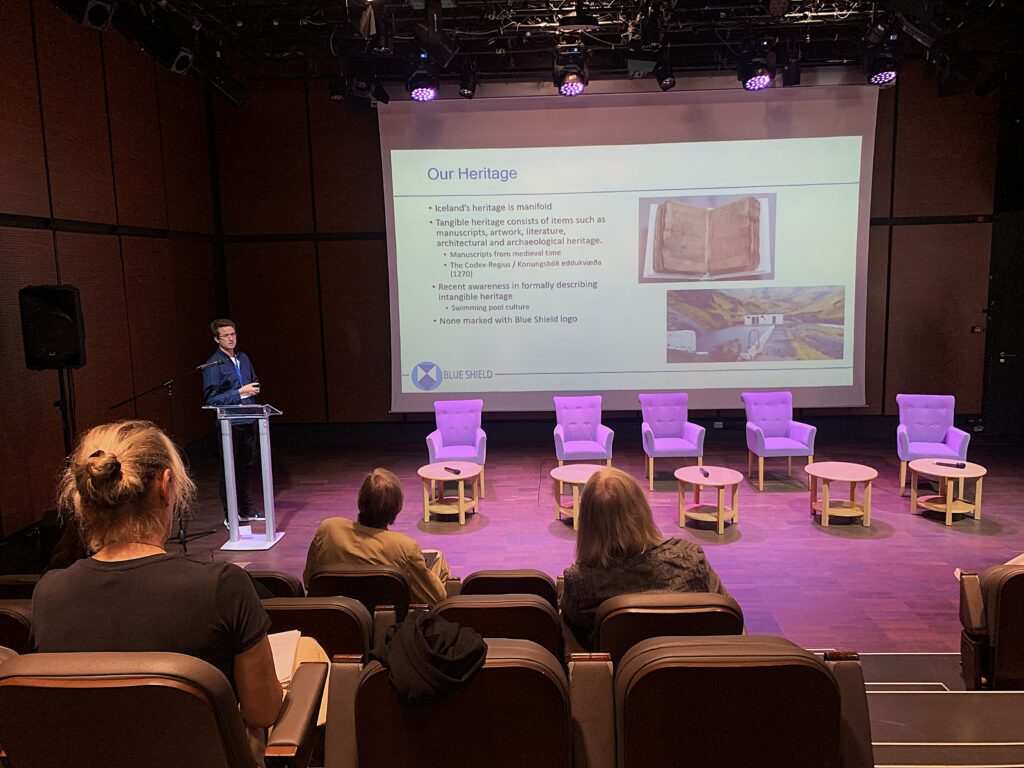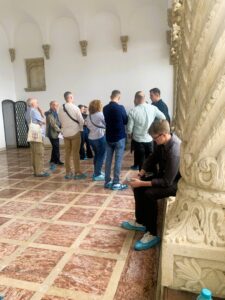
The Museum Council attended the annual meeting and conference of the International Blue Shield Association from 9 to 12 September. The conference was held in Bucharest, Romania, in collaboration with the Romanian National Institute for Heritage, and its title was Shielding the Past: 70 years of the Hague Convention on the occasion of the 70th anniversary of the 1954 UNESCO Hague Convention for the Protection of Cultural Property in the Event of Armed Conflict.
The International Blue Shield of Iceland is a non-governmental organization that works to protect cultural heritage at risk from natural disasters and armed conflict. It is a non-governmental organization that has its roots in the Hague Convention of 1954, and is led by the International Federation of Museums (ICOM), the International Council of Institutions of Cultural Heritage (ICOMOS), the International Federation of Archives (ICA) and the International Federation of Libraries (IFLA). It is a non-governmental organization that works to protect cultural heritage at risk from natural disasters and armed conflict. It consists of national committees and an international board elected by all national committees.
The Blue Shield National Committees are located around the world and there are currently 34 committees operating in as many countries, and 9 more are in preparation. In Iceland, the Blue Shield National Committee was established in 2014 on United Nations Day, October 24. The main goal of establishing the association is to increase the professional knowledge of those working in cultural institutions about the protection of cultural heritage with regard to the risks that may arise, including numerous natural hazards such as landslides, floods, earthquakes and ashfall due to volcanic eruptions. All of these are risks that are well known in this country, and it is therefore important to consider preventive measures for the protection of cultural heritage.
In this anniversary year of the 1954 Hague Convention, the conference focused on building the Blue Shield in Eastern Europe, encouraging the establishment of new committees and providing them with opportunities and platforms to learn from each other. The Chairman of the International Blue Shield, Peter Stone, opened the conference and spoke about the importance of cultural heritage and its value to societies. He said that cultural property provides tangible and intangible links to the past that are important for creating awareness for both individuals and communities, but also the need for belonging as well as well-being and dignity. First and foremost, people should always be protected, but nevertheless, cultural property is intertwined with the well-being of people and is important to societies, and therefore it is extremely urgent that it be protected.

Heiðar Lind Hansson, Head of Data Reporting and Monitoring at the National Archives and Chairman of the Blue Shield of Iceland, spoke about the activities of the national department in Iceland and what priorities and projects lie ahead. In another presentation, Heiðar discussed the National Archives' response to the fire outbreak in Reykjanes and the rescue operations in Grindavík, when National Archives staff rescued the municipality's archives. The rescue exceeded expectations despite the fact that there were no contingency plans in place, but contingency plans are now being prepared by the National Archives as well as other cultural institutions in Iceland.

National Committees around the world gave short presentations discussing the nature of their activities in each country and what was happening. National Committees also spoke about the cultural assets, both tangible and intangible, that are in their country and whether the cultural assets are marked with the Blue Shield or whether they are specifically protected by the 1954 Hague Convention.

The conference also included a full-day workshop in the Mogosoaia Palace, where the main objective was to examine how the content of the treaty could be implemented and implemented, with particular emphasis on conducting a risk assessment in the event of a conflict. A kind of role-playing game was conducted where a detailed script was presented to the group and processed in group work in the area, which was presented at the end of the day. The groups were to discuss and examine, for example, what cultural values were at the site, which monuments are important to the site and for whom they are important, as well as conduct a risk assessment with regard to personnel. The site was then thoroughly inspected and the complexity of protecting the site based on a risk assessment was considered, and which groups would play that role, to name a few. There were lively discussions and speculations, which was a good exercise in thinking about contingency plans from different perspectives.
The conference concluded with contributions from different national committees, where national committees from the United States, Sweden, Belgium, Germany and France came together in a panel discussion and discussed how new national committees could gain a foothold in the organization and working methods, based on the experiences of their national committees.
You can see more information and photos from the conference here.
